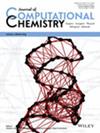Can Water Trigger Room-Temperature Formation of Benzofuran-2(3H)-one Scaffolds From Vinyldiazene Derivatives? Computational Insights Into an Unusual Cyclization
Abstract
Access to benzofuran-2(3H)-one derivatives from readily available substrates under mild conditions is crucial in the pharmaceutical and plastics industries. We identified (Z)-3-(2-phenylhydrazineylidene)benzofuran-2(3H)-one (P) during the recrystallization of (E)-2-(2,2-dichloro-1-(phenyldiazenyl)vinyl)phenol using a 96% ethanol solution. The mechanism of the unexpected substrate conversion leading to P is investigated using density functional calculations. The computations revealed that ethanol is required to initiate the reaction via TS1E, which involves a concerted deprotonation of ethanol by the basic diaza group of the substrate and an ethoxy group attacking the electrophilic center (Cl2C), with an energy barrier of 28.3 kcal/mol. The resulting intermediate (I1E) is calculated to be unstable and can yield a cyclic chloroacetal adduct with a lower energy barrier of 2.2 kcal/mol via the ring-closure transition state (TS2E). In the absence of water, the next steps are impossible because water is required to cleave the ether bond, yielding P. A small amount of water (4% of the recrystallization solvent) can promote further transformation of I2E via the transition states TS3E (∆G‡ = 11.1 kcal/mol) and TS4E (∆G‡ = 10.5 kcal/mol). A comparison of the ethanol/water- and only water-promoted free energy profiles shows that the presence of ethanol is crucial for lowering the energy barriers (by about 5 kcal/mol) for the initial two steps leading to the cyclic chloroacetal (I2E), whereas water is then required to initiate product formation.


 求助内容:
求助内容: 应助结果提醒方式:
应助结果提醒方式:


